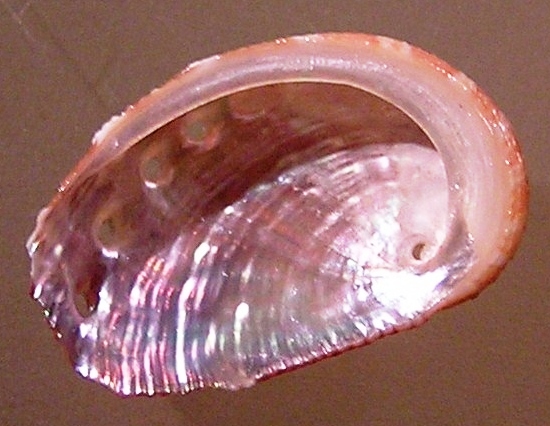- Series:Animals, Transcript English
Psalm 127:1
“Except the LORD build the house, they labour in vain that build it: except the LORD keep the city, the watchman waketh but in vain.”
The mother-of-pearl found in abalone shells is both beautiful and exceptionally strong. Scientists wanted to find out how the shell formed in the hope that they could discover the secret of the shell’s strength.
 Researchers invented a clever way to do this, using only a couple of abalones growing in saltwater tanks. They placed a number of glass slides on the growing abalone shells. The new shell material thus formed on the glass slides as the abalones grew. Researchers removed a slide at intervals to study it using an electron microscope, leaving the remaining slides to collect more shell material. The microscope showed the well-known six-sided calcium carbonate tiles stacked like bricks. These tiles are cemented together with a protein. However, they found that the protein “cement” did not continue right to the edges of the stacks of “tiles.” Unlike normal cement, the protein “cement” stretches, and this permits the stacks to slide sideways rather than shattering when, say, a predator tries to break the shell. The shell can thus absorb a great deal of force without breaking, and this is the secret of its strength.
Researchers invented a clever way to do this, using only a couple of abalones growing in saltwater tanks. They placed a number of glass slides on the growing abalone shells. The new shell material thus formed on the glass slides as the abalones grew. Researchers removed a slide at intervals to study it using an electron microscope, leaving the remaining slides to collect more shell material. The microscope showed the well-known six-sided calcium carbonate tiles stacked like bricks. These tiles are cemented together with a protein. However, they found that the protein “cement” did not continue right to the edges of the stacks of “tiles.” Unlike normal cement, the protein “cement” stretches, and this permits the stacks to slide sideways rather than shattering when, say, a predator tries to break the shell. The shell can thus absorb a great deal of force without breaking, and this is the secret of its strength.
The ordered structure of the abalone shell is difficult to explain as the result of unordered chance. The intricate genius of not gluing the edges of the stacked tiles to add strength to this design points directly to our Creator.
Prayer:
Father, I rejoice that You do all things well. Help me to build my life on Your plan, which I read about in Scripture. Amen.
Notes:
Science News, 2/12/05, p. 110, “Tiles stack for shell strength in abalone.”
